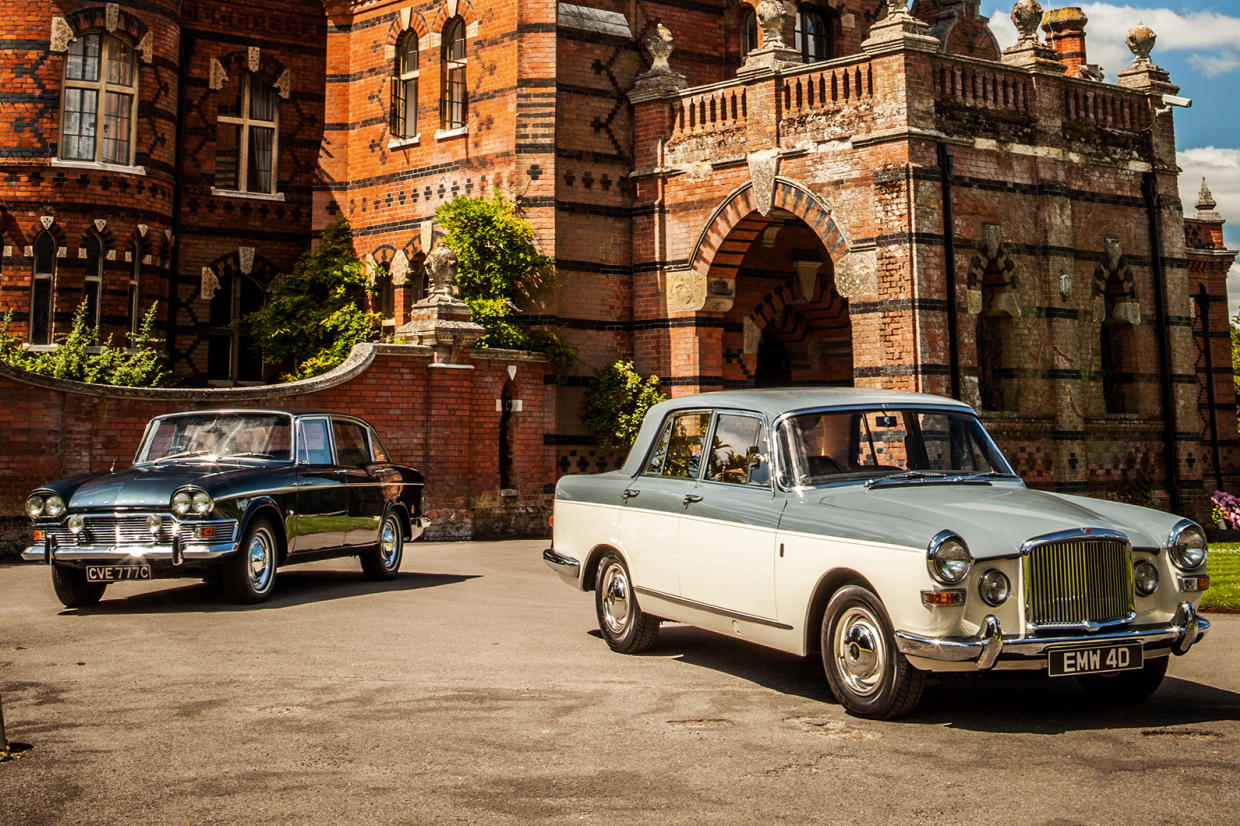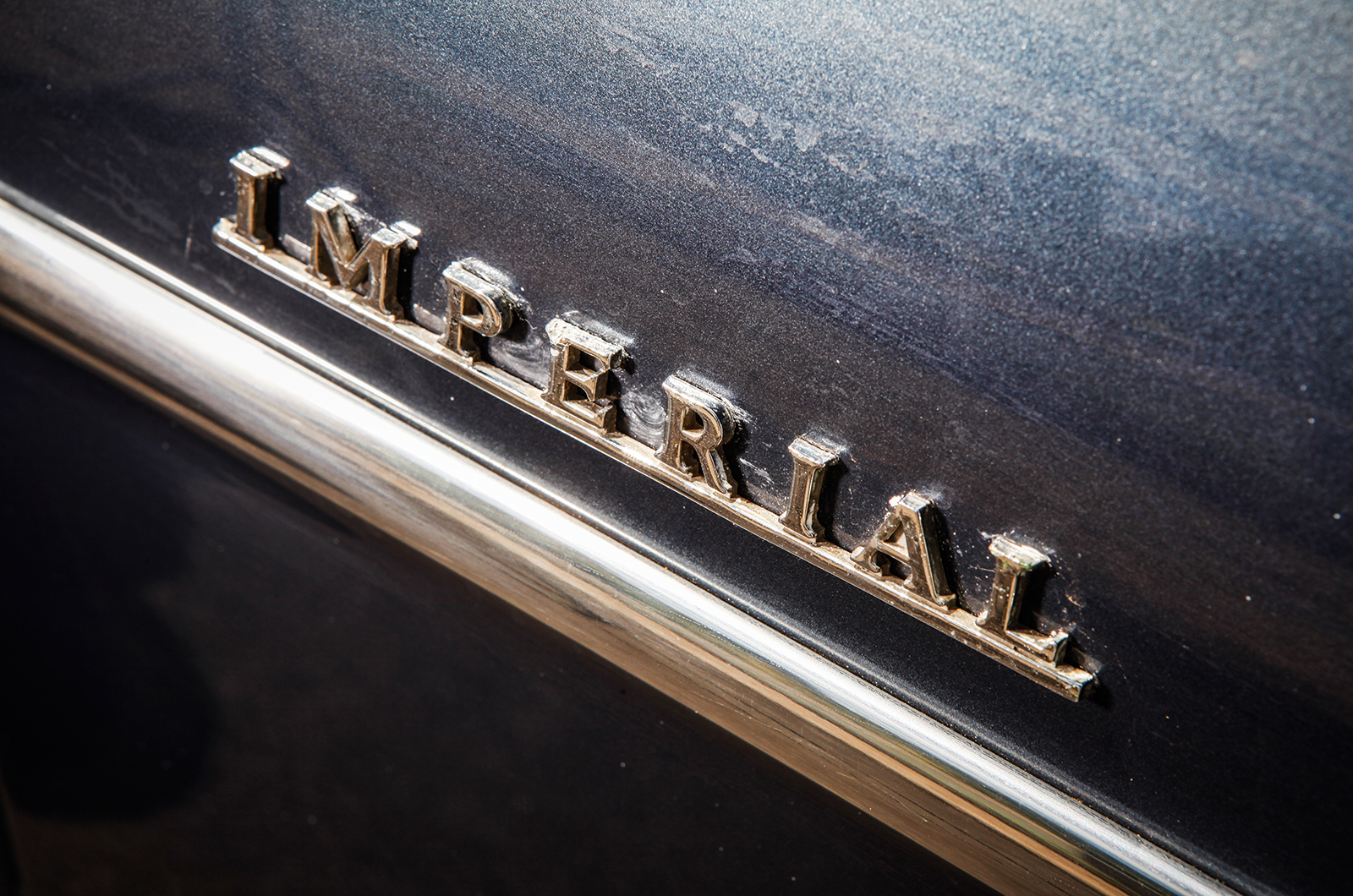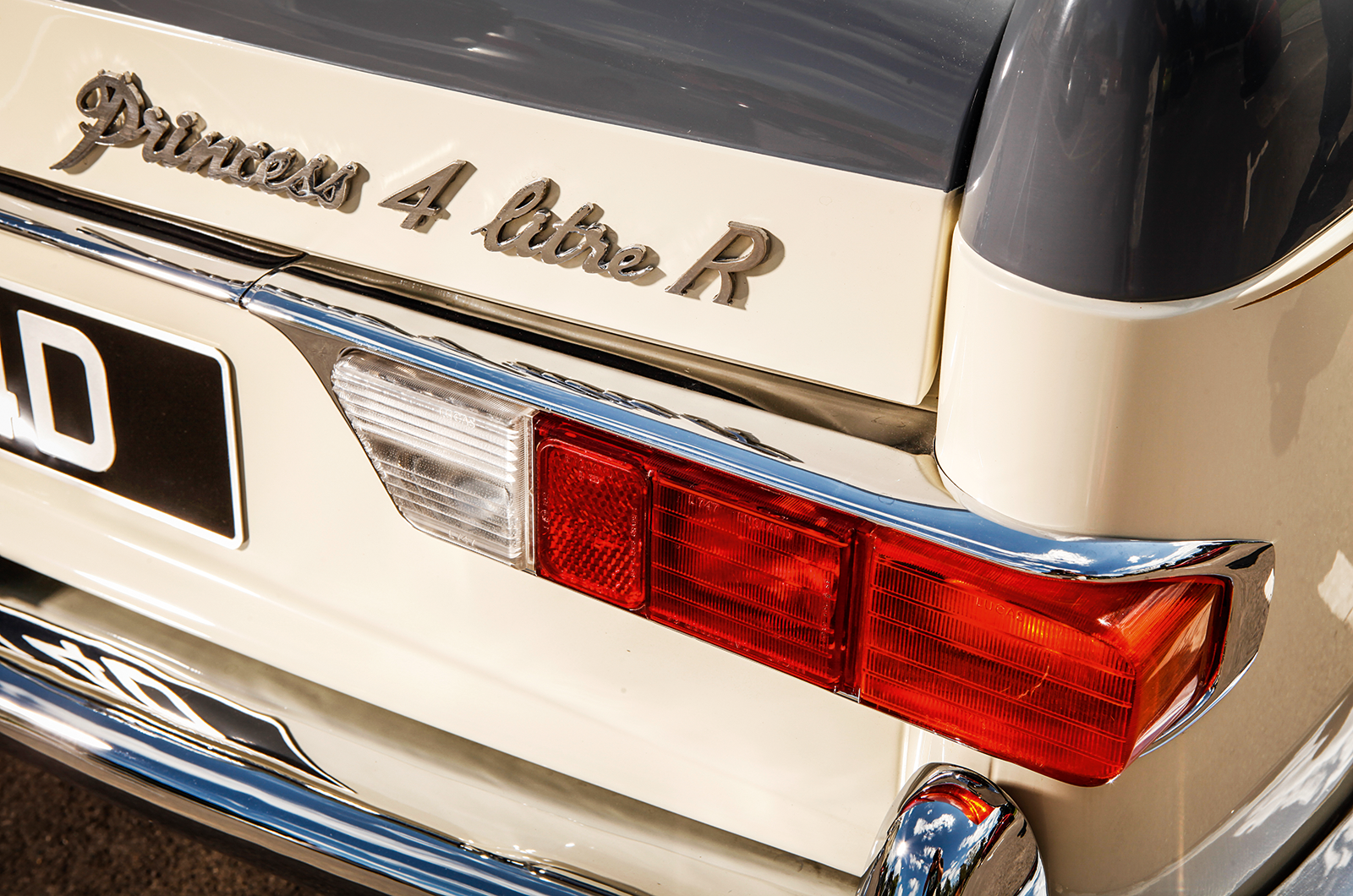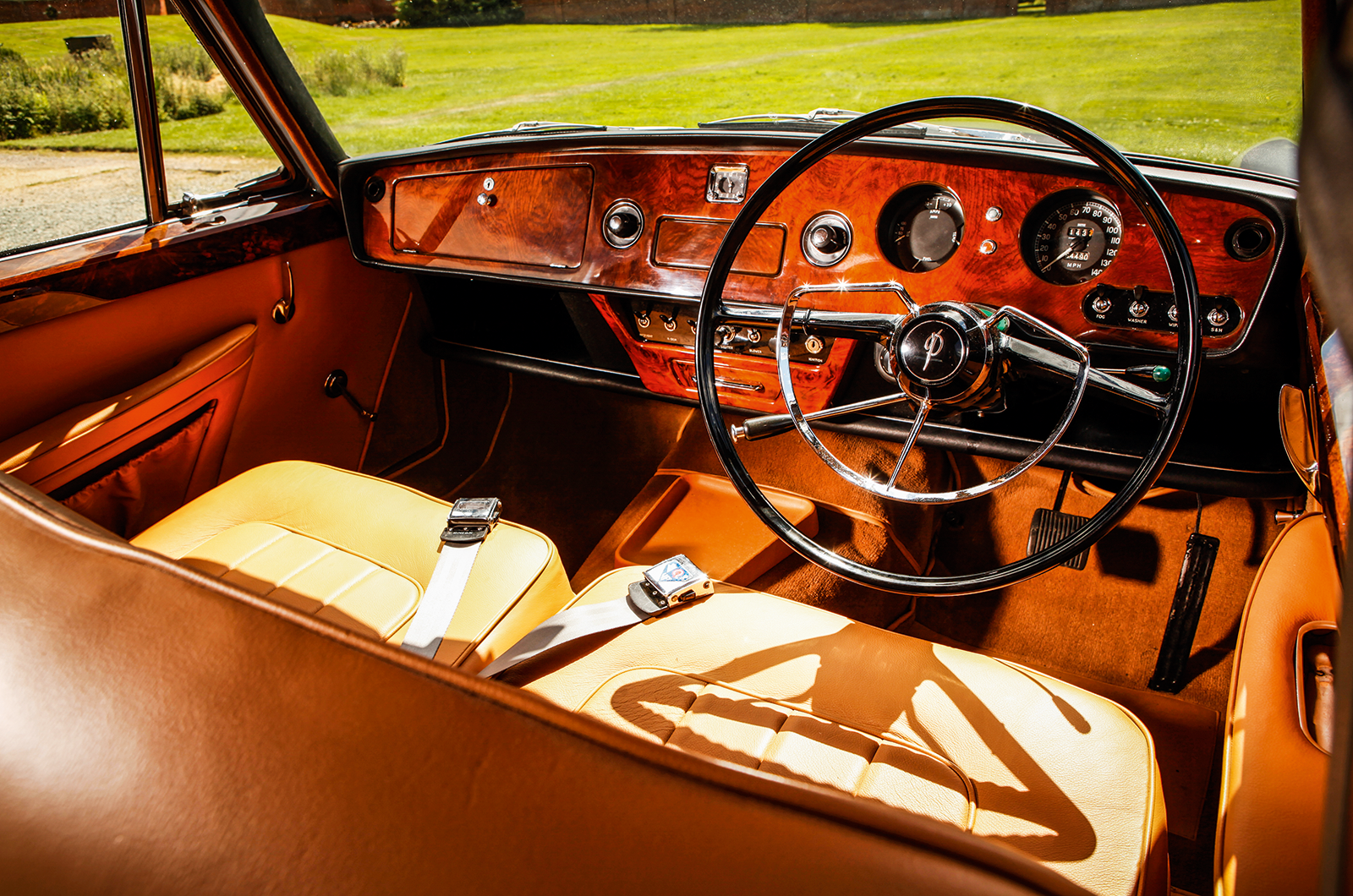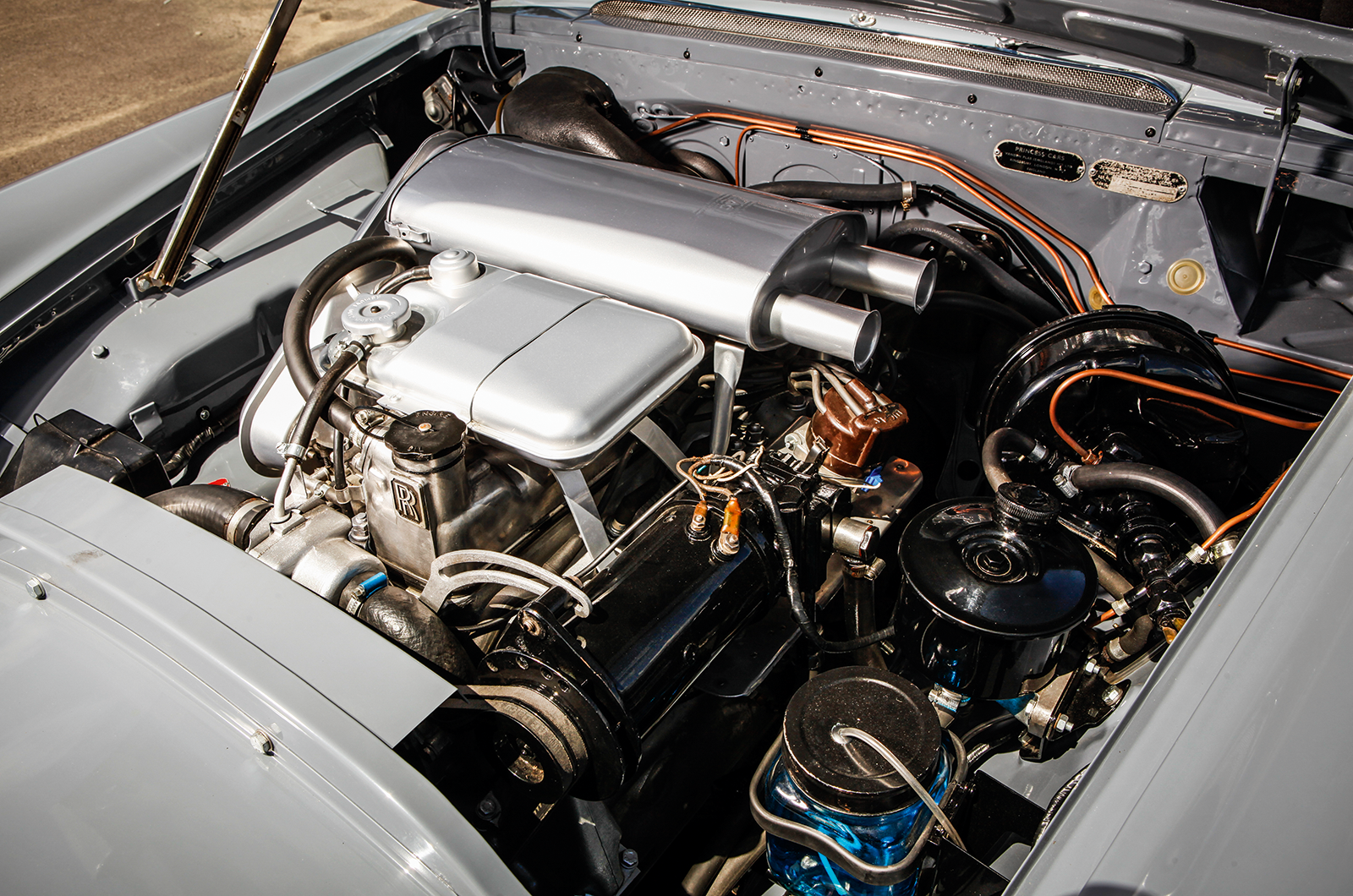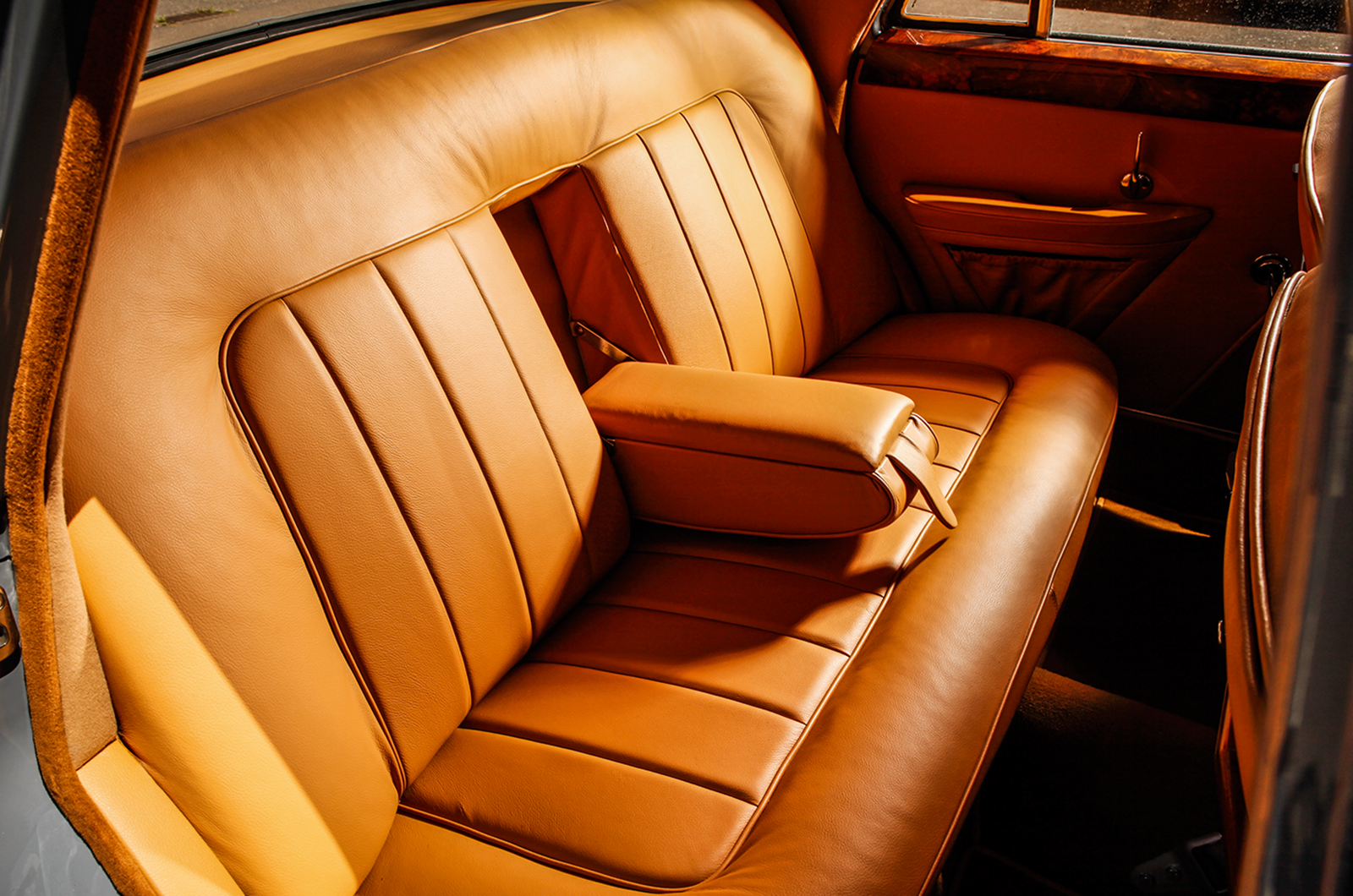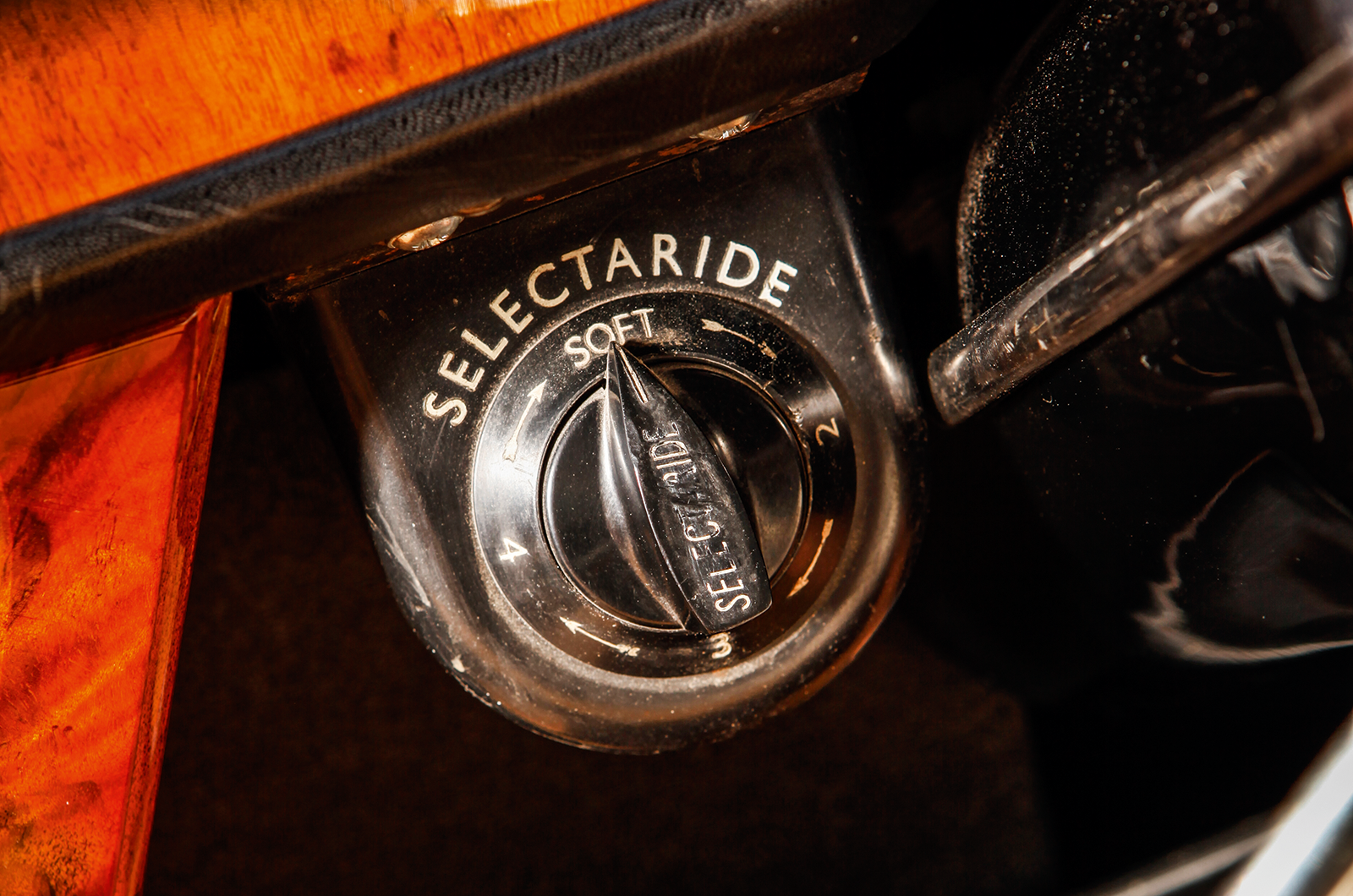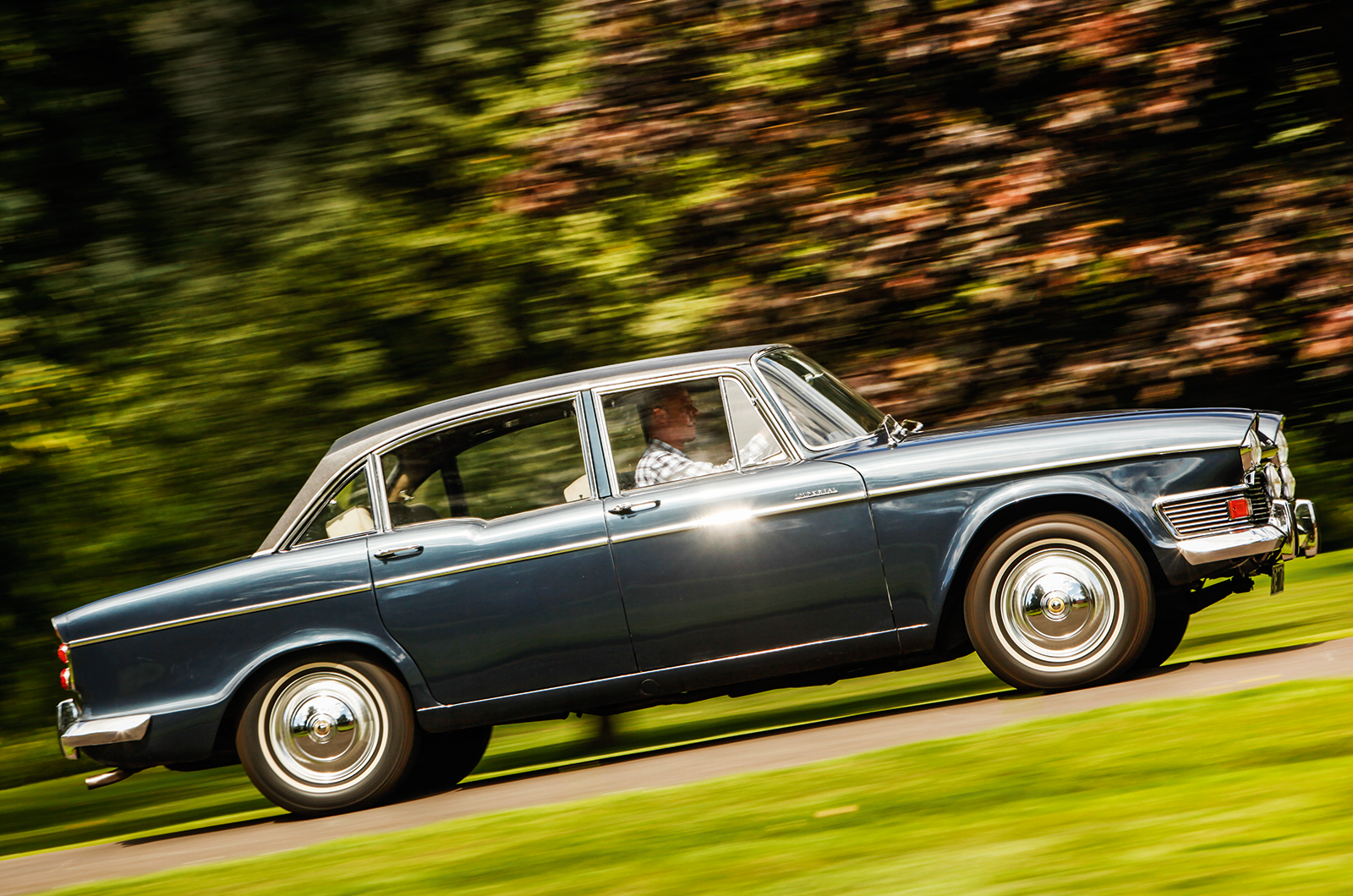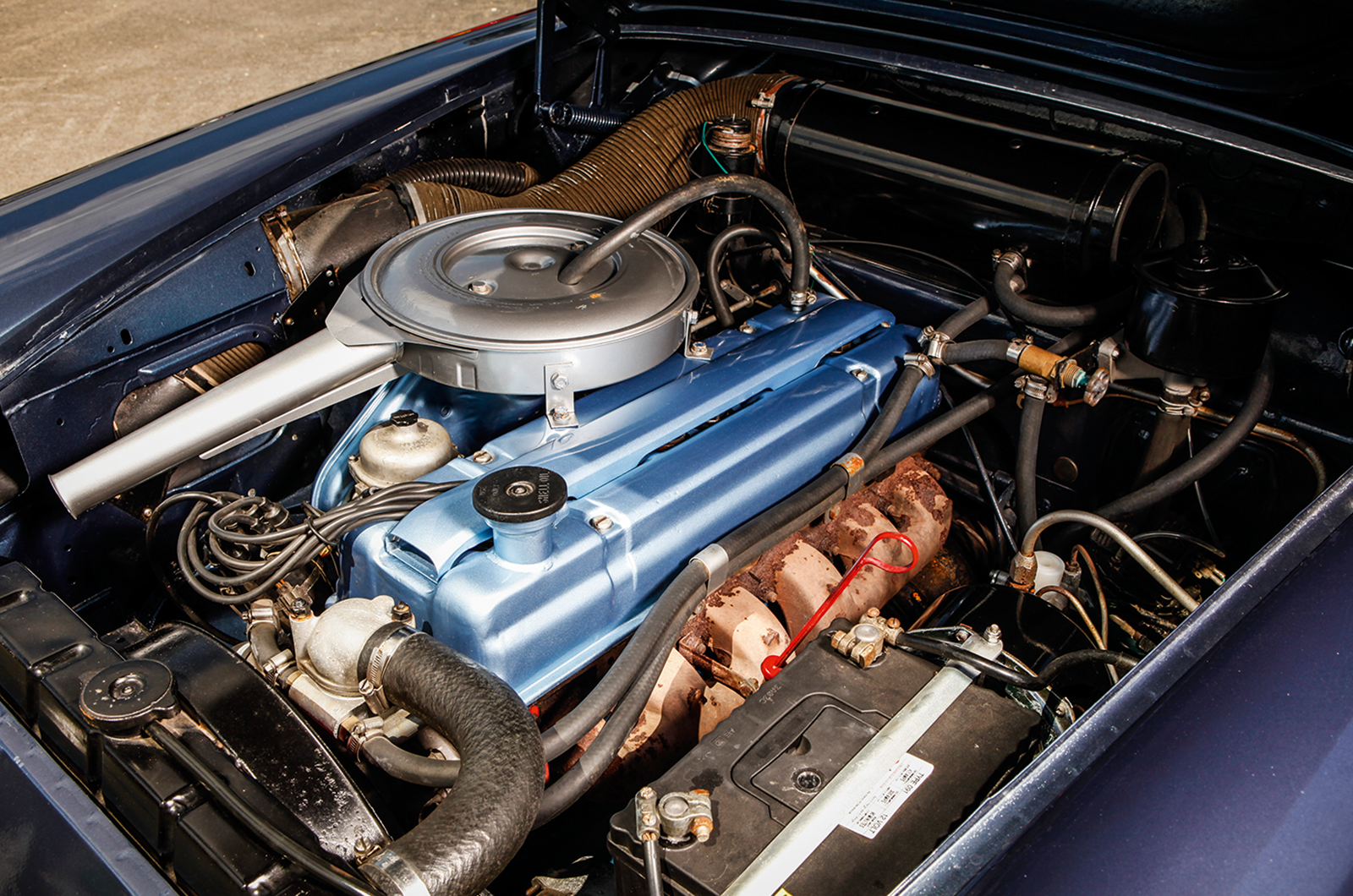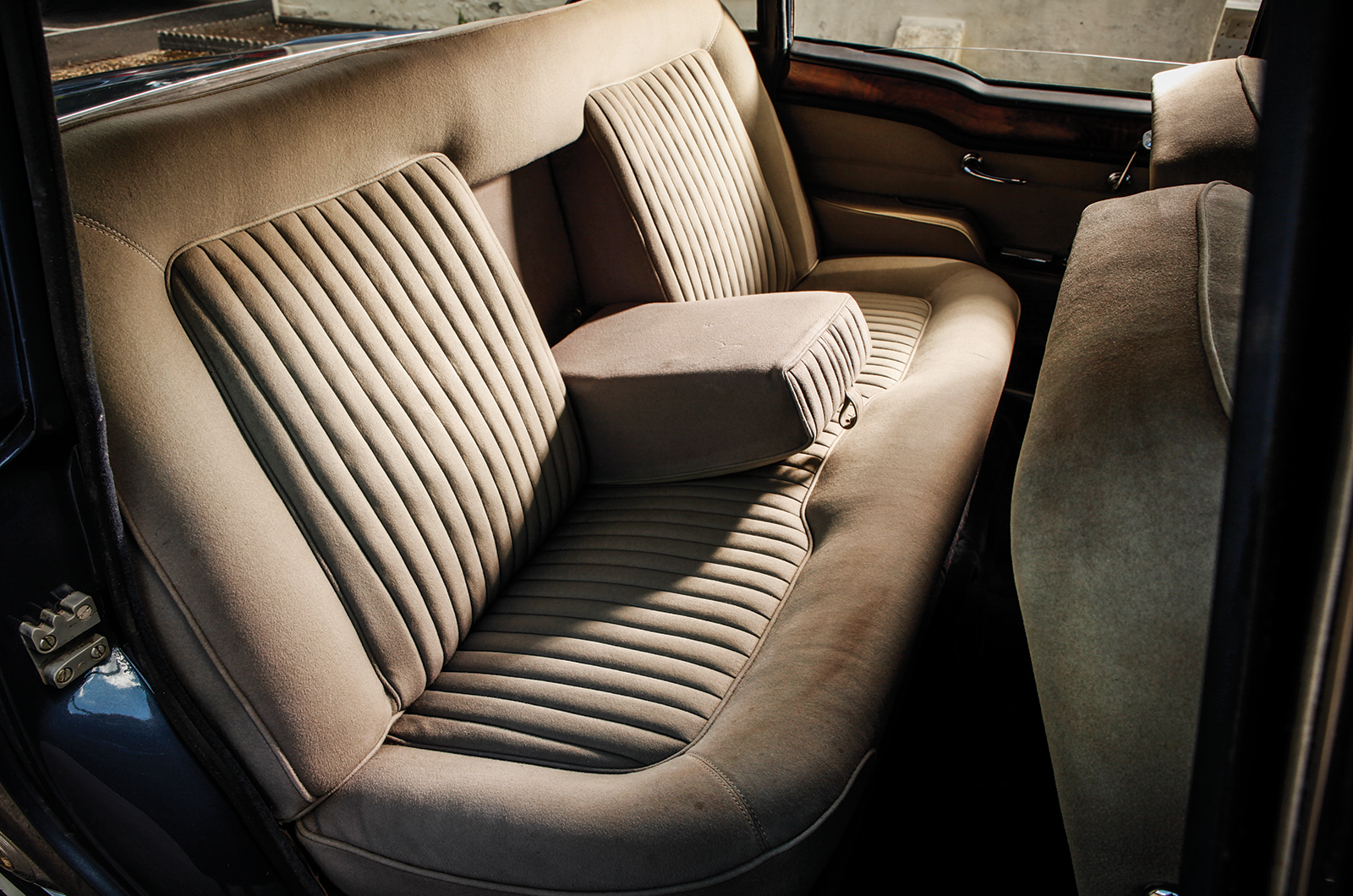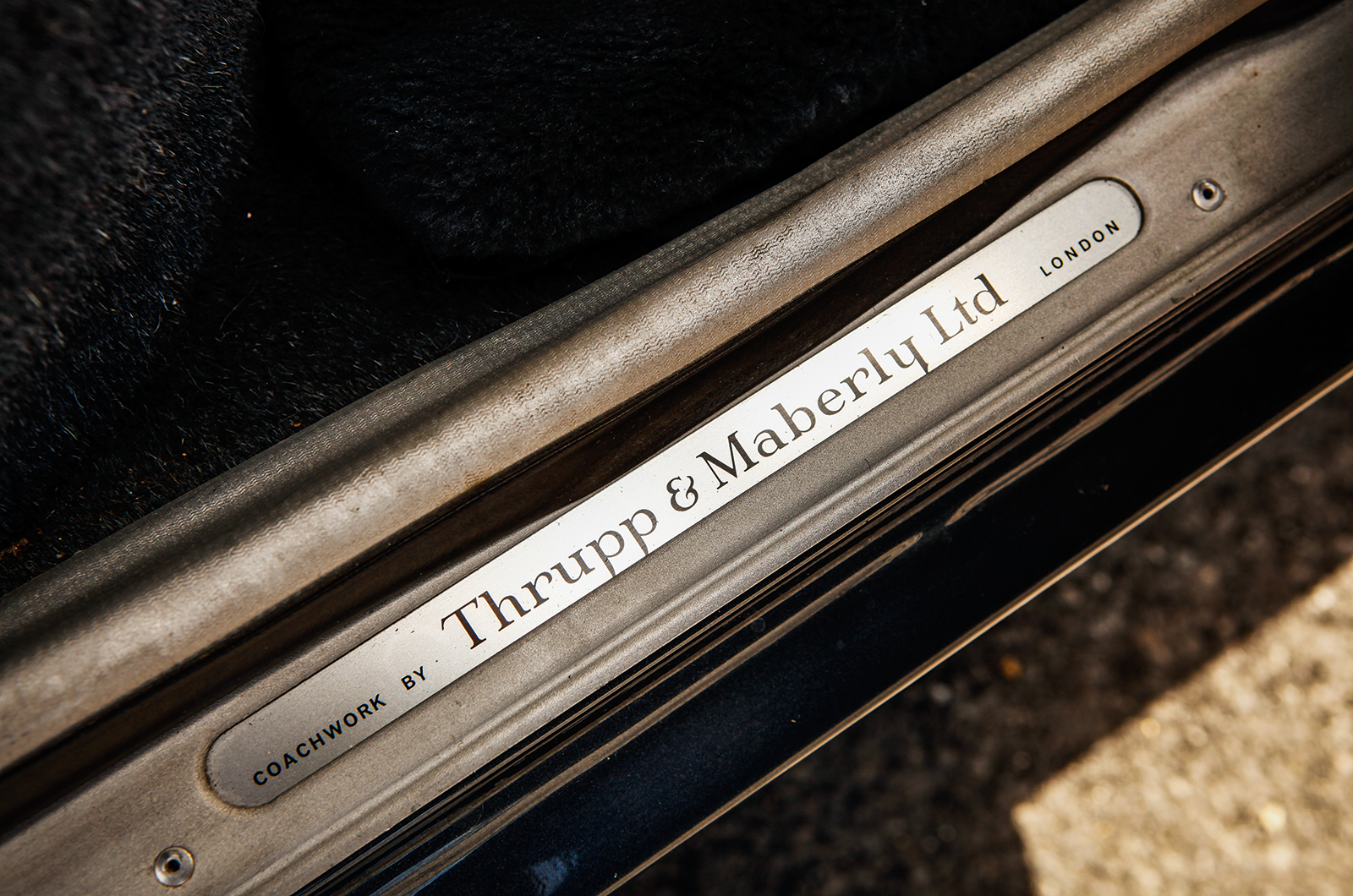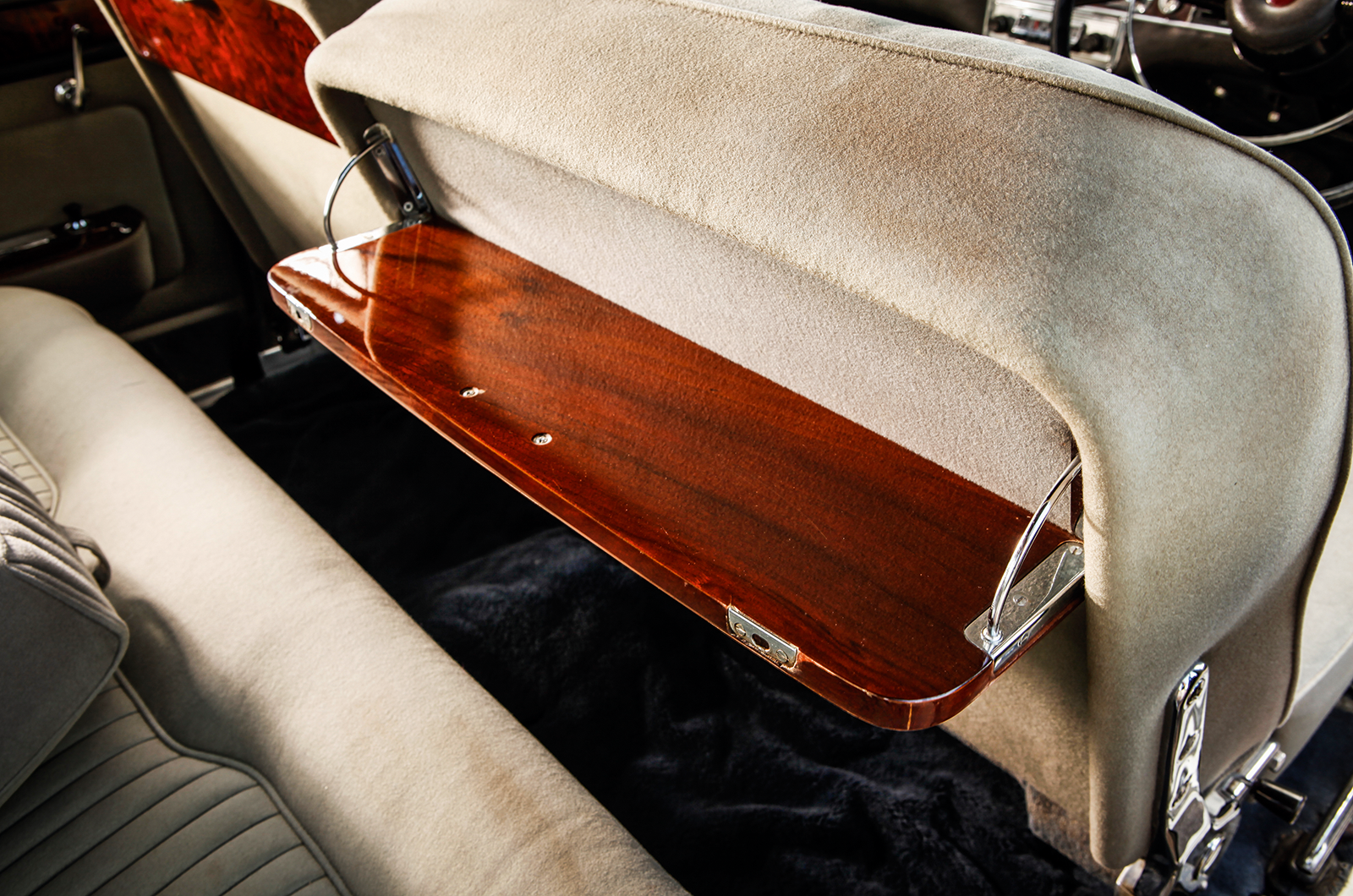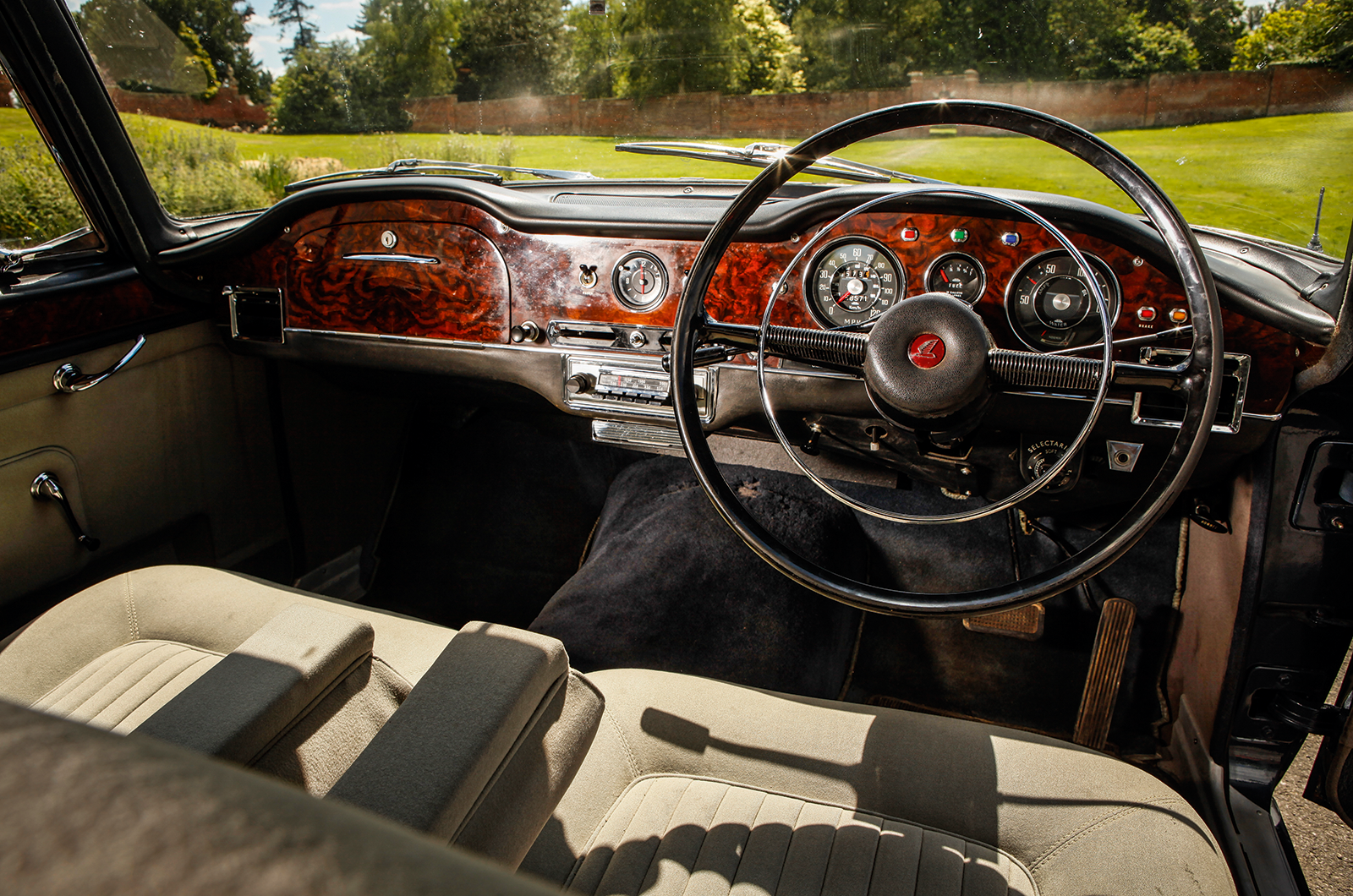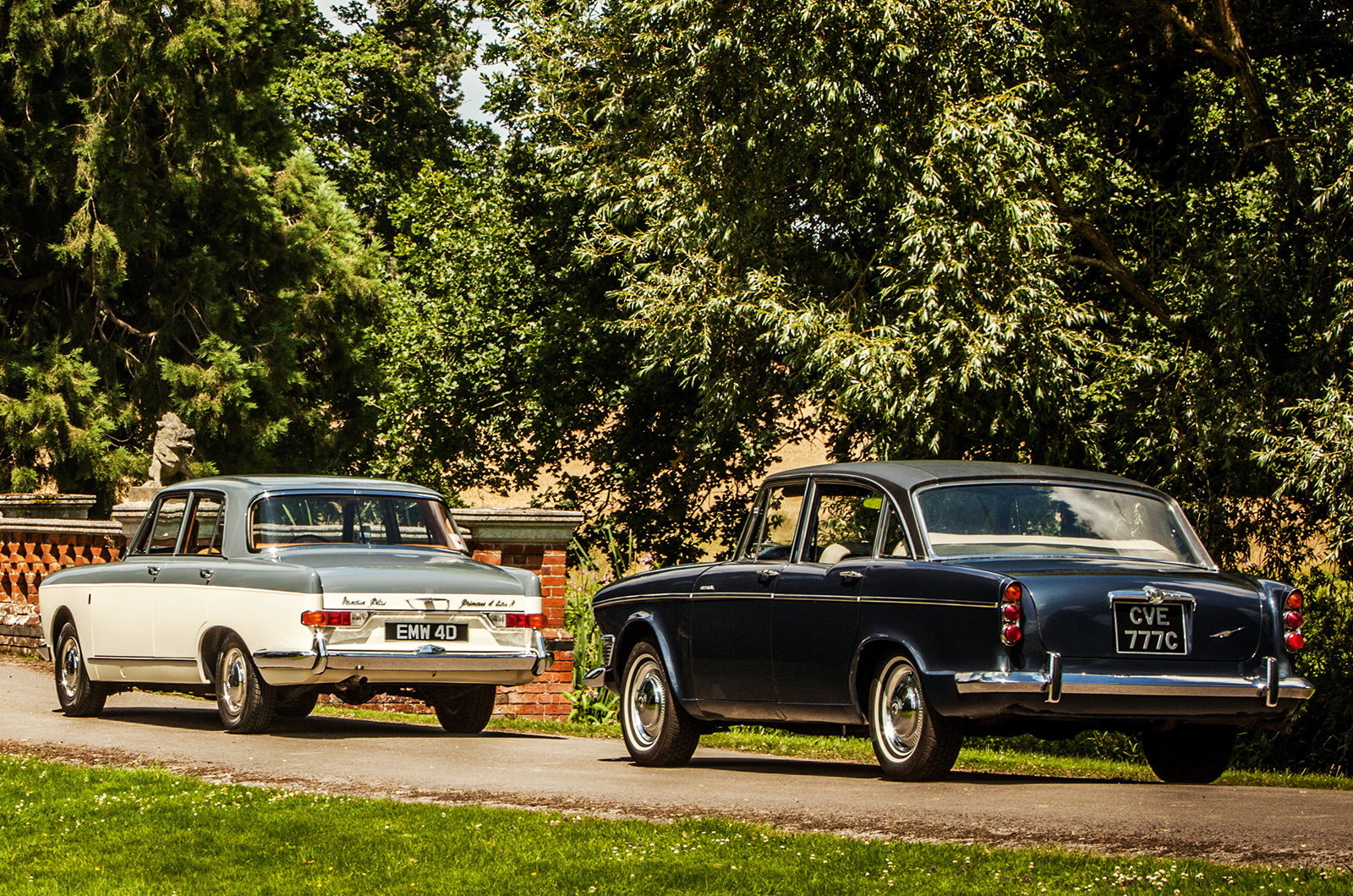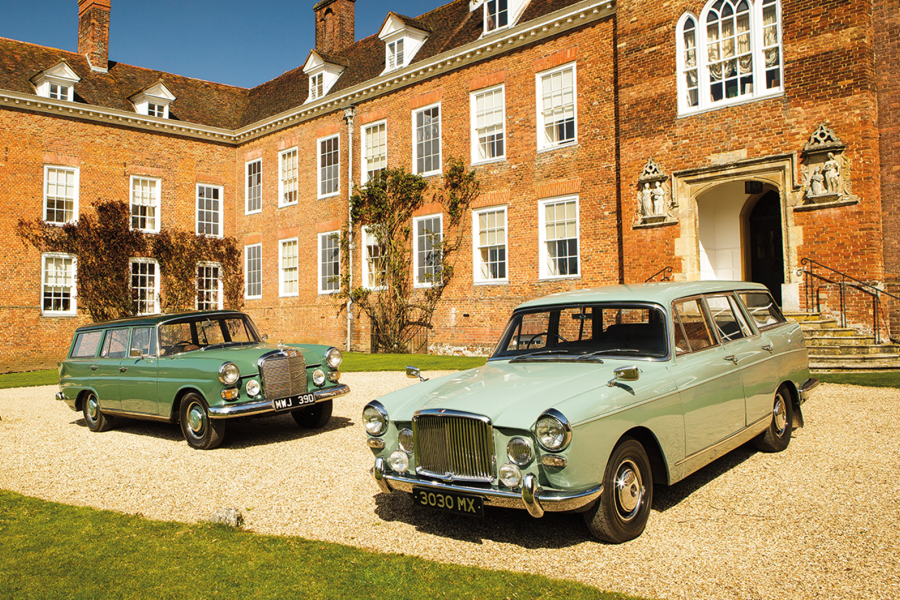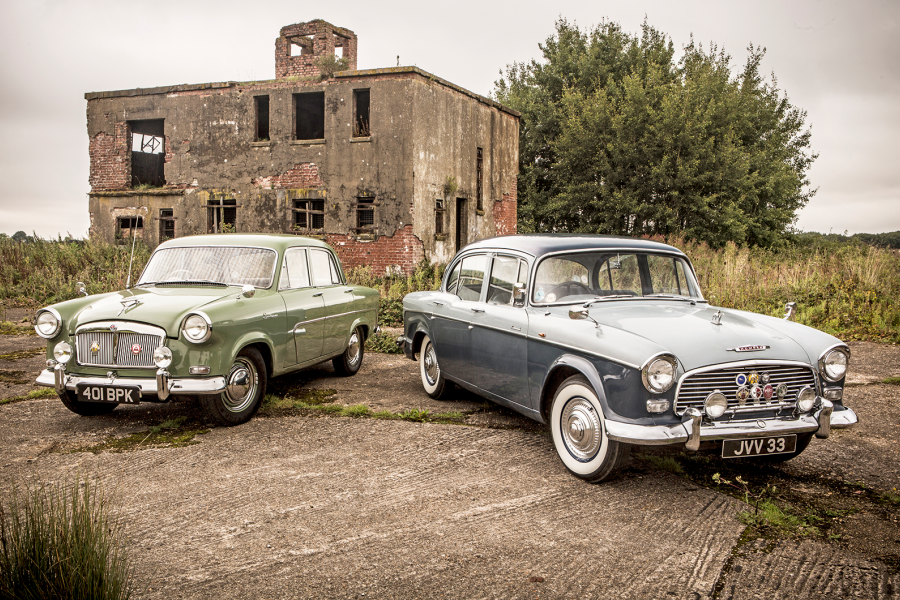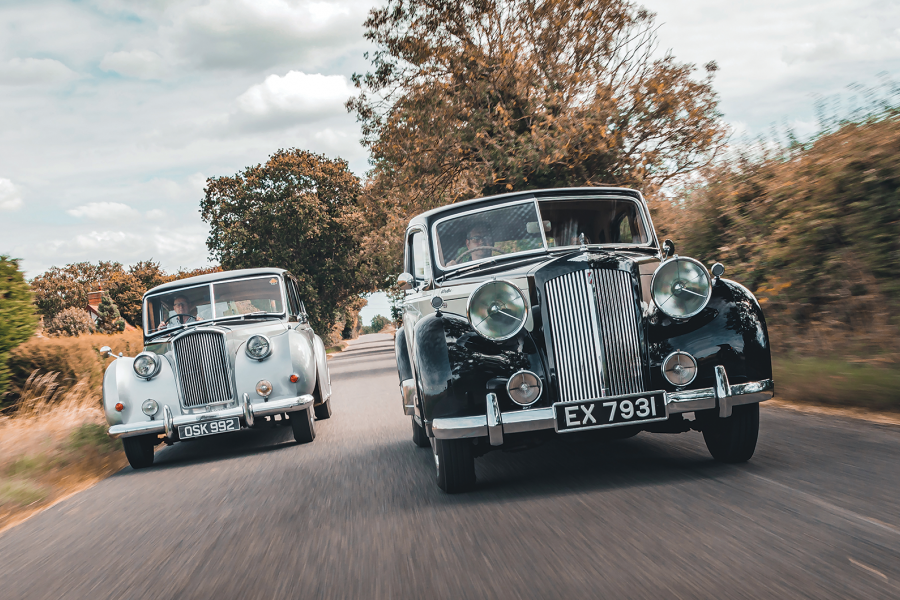This is not at the expense of refinement, either: the Selectaride damping means that the Imperial’s suppleness can be varied from Soft to position 4 (firm).
The Humber Imperial feels luxurious with its West of England cloth trim and walnut details
To a 1965-vintage driver, altering the switch as you cruised down the M1 would inform passengers that you were truly a motorist of the jet-set.
When the Humber was launched, Chrysler had acquired 46% of the ordinary shares of the Rootes Group and 65% of its non-voting shares.
One of its decisions was to cancel the Imperial’s planned 5.1-litre V8 replacement.
The marque lived on until ’76 with the Sceptre – basically a Hillman Hunter Super De Luxe to the power of 10 – but, when the car that provided ‘A new conception of executive luxury’ ceased production in ’67, it marked the end of an era for one of Britain’s most famous car makers.
The Humber Imperial’s vast steering wheel sits ahead of a set of Jaeger gauges
Conversely, the challenge for BMC was to develop Vanden Plas as a prestige brand to compete with Jaguar and Mercedes. Had the Princess not suffered from build-quality issues, this might have worked.
Production of the 4 litre R stopped in 1968 and over the next three decades too many examples fell into the hands of banger racers, though some reformed individuals are now restoring them.
In an ideal world, one would be chauffeured to a day of corporate drama and four-hour expense-account luncheons in the Vanden Plas and take to the wheel of the Humber at weekends.
There can be no overall winner for such is their appeal that if I had all of the money that I’ve spent on old cars over the years, then I would spend it on these two.
They are big, thirsty and ostentatious – and there aren’t enough of them left.
Images: Tony Baker
Thanks to: Chas Thompson (Humber) and Graeme Blackmore (Vanden Plas); John Lakey, Cambridge Oxford OC; Vanden Plas OC; The Elvetham Hotel in Hartley Wintney
This was originally in our January 2015 magazine; all information was correct at the date of original publication
Factfiles
Vanden Plas Princess 4 Litre R
- Sold/number built 1964-’68/6555
- Construction steel monocoque
- Engine all-alloy, inlet-over-exhaust valve ‘F’ head 3909cc straight-six, twin SU carburettors
- Max power 175bhp @ 4800rpm
- Max torque 218Ib ft @ 3000rpm
- Transmission three-speed Borg-Warner Model 8 automatic, driving rear wheels
- Suspension: front double wishbones, coil springs, lever-arm dampers, anti-roll bar rear live Salisbury axle, semi-elliptic leaf springs, Armstrong Selectaride dampers
- Steering Burman Hydrosteer power-assisted cam and peg
- Brakes discs front, drums rear, with servo
- Length 15ft 8in (4775mm)
- Width 5ft 8½in (1740mm)
- Height 4ft 11in (1499mm)
- Wheelbase 9ft 2in (2794mm)
- Weight 3570Ib (1619kg)
- 0-60mph 12 secs
- Top speed 112mph
- Price new £1994
Humber Imperial
- Sold/number built 1964-’67/3032 (including Super Snipe Series V)
- Construction steel monocoque
- Engine all-iron, overhead-valve 2965cc straight-six, twin Zenith carburettors
- Max power 128½bhp @ 5000rpm
- Max torque 167lb ft @ 2600rpm
- Transmission three-speed Borg-Warner Model 35 automatic, driving rear wheels
- Suspension: front double wishbones, coil springs, telescopic dampers rear live axle, semi-elliptic leaf springs, Armstrong Selectaride dampers; anti-roll bar f/r
- Steering Burman Hydrosteer power-assisted recirculating ball
- Brakes discs front, drums rear, with servo
- Length 15ft 8in (4775mm)
- Width 5ft 9½in (1765mm)
- Height 5ft 1in (1549mm)
- Wheelbase 9ft 2in (2794mm)
- Weight 3651lb (1656kg)
- 0-60mph 16.2 secs
- Top speed 100mph
- Price new £1795 18s 9d
READ MORE
Rolls-Royce Silver Cloud III vs Cadillac Series 62: the sky is the limit
Citroën GS Pallas vs Vanden Plas 1.7: avant-garde for the masses
Keeping up appearances: Ford vs Vauxhall vs Hillman vs Singer vs Humber vs Riley
Andrew Roberts
Andrew is a long-time contributor to Classic & Sports Car
